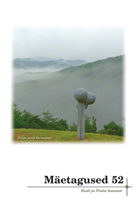Ebavõrdne võitlus stand-upi ja kabareetraditsiooni vahel Poolas
The uneven struggle of stand-up in Poland with the cabaret tradition
Author(s): Władysław ChłopickiSubject(s): Customs / Folklore
Published by: Eesti Kirjandusmuuseum
Keywords: cabaret; monologue; Polish humour; stand-up
Summary/Abstract: The article first describes the old cabaret tradition of Polish comedy, and then looks at various forms of stand-up that have been spreading in Poland over the last 20 years, mainly on TV, but some originating in newly established comedy clubs. Within the last twenty years, the new form of stand-up in its American variety has been slowly moving in. The characteristics of this new genre included precisely the topics which were excluded from the old form (such as explicit sex references and scatology) as well as the focus on the vernacular. The common features of stand-up included immediacy, playing cultural and linguistic kinship with the audience, impersonations, “shifting consensus”, seeming spontaneity, and occasional self-deprecation. Young performers found a venue in the well known HBO show called “Na stojaka” (an attempt to translate stand-up into Polish, a show which ran for ten years), as well as other venues such as the stand-up competition called “Zabij mnie śmiechem” (“Kill me with laughter”) broadcast by the Polsat commercial channel since 2010, in which the winner is rewarded with a trip to an American stand-up school. This kind of stand-up does not meet with universal appeal, as one comment found on the internet clearly shows: “Stand-up Tragedy”. The Polish audiences largely believe that the performance must be first of all funny, and only then “authentic”, while some young performers seem to play mainly on obscenity and scatology and forget the need to amuse. Therefore, even though the new form has been slowly gaining ground, the cabaret prevails both in some of the forms which it shares with stand-up (e.g. non-interactive monologues, which are no longer literary but colloquial, or impersonations) and also with regard to popular performers, who largely originate in cabaret or are well-known actors.
Journal: Mäetagused. Hüperajakiri
- Issue Year: 2012
- Issue No: 52
- Page Range: 31-46
- Page Count: 16
- Language: Estonian

